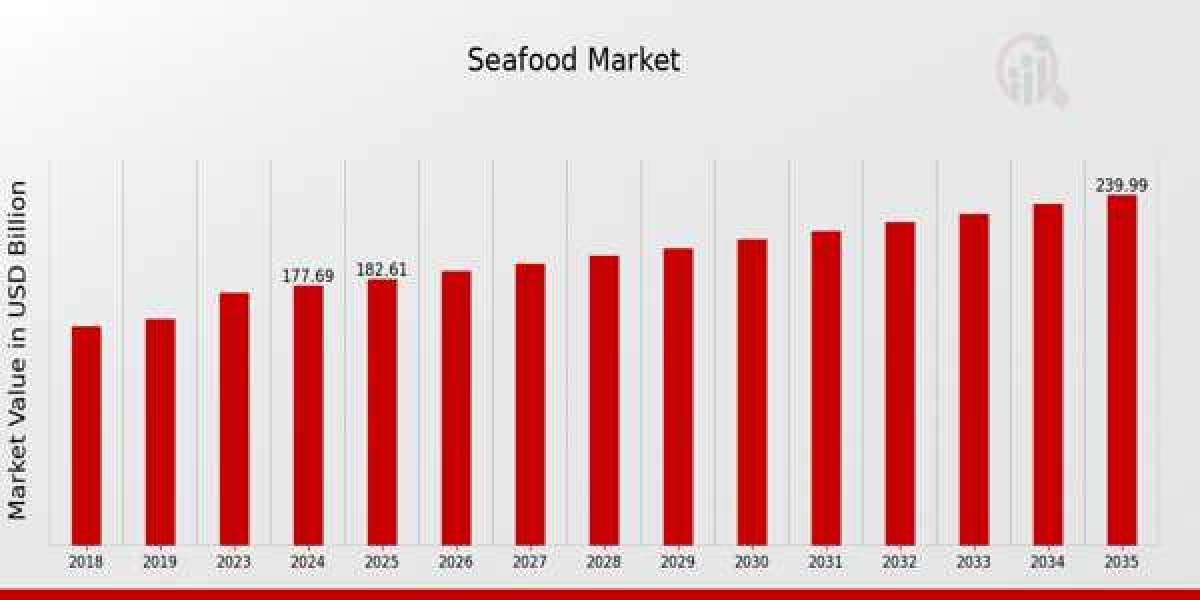Seafood has long held a prized place in culinary traditions across the globe, from the bustling fish markets of Tokyo to the shrimp-filled gumbo pots of the American South. But beyond its cultural value, the seafood industry is now a powerful economic force making waves in the global marketplace.
In 2023, The Seafood Market was projected to be worth 172.9 billion USD. By 2035, the seafood market industry is predicted to have grown from 177.69 billion USD in 2024 to 240 billion USD. During the projection period (2025-2035), the seafood market's compound annual growth rate (CAGR) is anticipated to be approximately 2.77%.
Health, Wellness a Shift in Protein Preferences
One of the leading drivers behind the rise in seafood consumption is a global shift toward healthier eating habits. Consumers are becoming more mindful of what they eat, and seafood has gained attention for being a lean, nutrient-rich source of protein. Fish like salmon, mackerel, and sardines are rich in omega-3 fatty acids, which support heart and brain health.
In regions like North America and Europe, more people are reducing their intake of red meat in favor of blue foods — a term that encompasses seafood and aquatic plants — because of their health and environmental benefits. The Mediterranean diet, which heavily emphasizes seafood, is also influencing eating habits worldwide.
Global Trade Supply Chains
The seafood market is inherently global. Countries in Asia-Pacific, such as China, India, Vietnam, and Thailand, are leading producers and exporters. Meanwhile, the U.S., Japan, and parts of Europe are major consumers.
Improvements in refrigeration technology, processing, and cold chain logistics have enabled seafood to travel further and last longer, expanding the reach of exporters. However, global events like the COVID-19 pandemic and climate-related disruptions have spotlighted vulnerabilities in supply chains, prompting more robust strategies for resilience and traceability.
Rise of Aquaculture
With overfishing and declining wild fish stocks threatening marine ecosystems, aquaculture — the farming of fish, shellfish, and other aquatic organisms — is emerging as a sustainable solution. According to the FAO, aquaculture now supplies more than half of all seafood consumed globally.
Innovations in aquafeed, disease control, and eco-friendly farming methods are making aquaculture more efficient and less environmentally damaging. Companies are also investing in land-based Recirculating Aquaculture Systems (RAS), which use filtered water in closed-loop systems to raise fish sustainably and locally.
Sustainability Consumer Awareness
Sustainability has become a key concern in the seafood market. Eco-labels like the Marine Stewardship Council (MSC) and Aquaculture Stewardship Council (ASC) are now influencing consumer choices. More buyers want to know not just where their seafood comes from, but how it was caught or raised.
Retailers and restaurants are under pressure to source responsibly, and tech innovations such as blockchain are being deployed to ensure transparency and traceability across the supply chain.
Key Companies in the Seafood Market Include:
- Thai Union Group
- Nissui
- Mowi ASA
- Bumble Bee Foods
- Seafood Harvesters of America
- _open seas
- Maruha Nichiro
- Highland Fisheries
- Trident Seafoods
- Dongwon Industries
- Japan Fisheries Co
- Columbia River Packers Association
- Pacific Seafood
- Marine Harvest
Innovation in Products Packaging
To meet modern consumer demands, seafood companies are innovating not just in how seafood is produced, but how it’s sold. Ready-to-eat and ready-to-cook seafood products are growing in popularity, particularly in urban areas where convenience is key.
Frozen seafood is gaining traction for its long shelf life and reduced waste. Meanwhile, eco-conscious packaging — such as recyclable or biodegradable containers — is becoming a competitive advantage.
Future Outlook
Looking ahead, the seafood market is poised for continued expansion. Growth in emerging markets, improvements in sustainable farming practices, and a rising number of pescatarian consumers are likely to buoy the industry further. However, stakeholders will need to address pressing challenges — from climate change and ocean pollution to ethical labor practices — to ensure long-term sustainability.
Read Our Related Report:
Organic Chocolate Market Research Report
Citric Acid Market Research Report
Frozen Fruits Market Research Report








